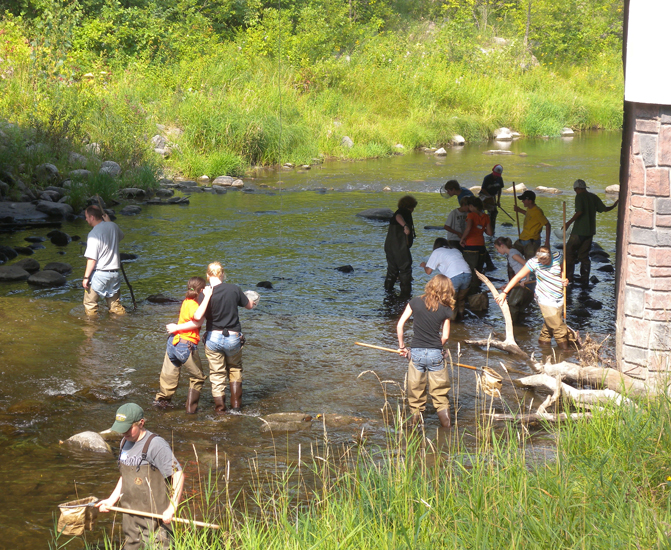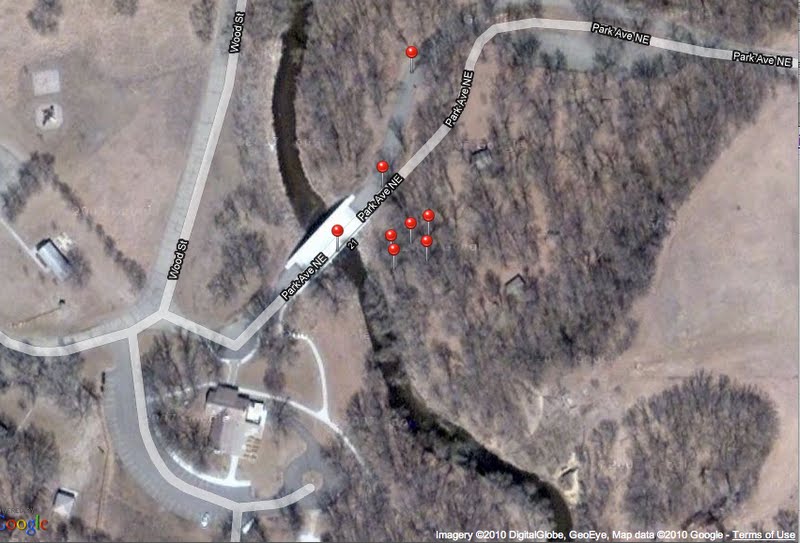
An Introductory Example
You will find that we scatter classroom examples throughout the content we create. Our intent is typically to provide some insight into what ideas we discuss or technology tools we describe look when implemented as learning experiences for students. Our first description of student technology use is a bit atypical in that the activities we describe do not occur within a familiar classroom setting and perhaps it is fitting that we begin with some examples that make clear that at least a few of our ideas will break with tradition.
Some of our favorite examples of technology integration in recent years have been generated during an annual middle-school trip to a nearby state park for what is now known as Eco-Ed Day. Our enthusiasm for this setting may stem from the opportunity to confront the common stereotypes that technology confines students to the computer lab and replaces experiences in the real world with virtual representations on the screen. To the contrary, we believe there are ways to use technology that enhance the learning that occurs in what some feel the need to describe as “real world” settings. We prefer to use the phrase “authentic’ settings.

Each year, seventh-grade students from the middle schools in our community spend one day at Turtle River State Park rotating through multiple stations emphasizing different science topics. To narrow our focus, we will concentrate on the station providing an exploration of pollution and water quality. Testing water quality has become a fairly common activity for middle and high school science students. The topic taps the general concern for environmental issues and offers the opportunity to apply methods by which scientists gather data to make decisions about important environmental issues. In most locations, students have the opportunity to gather water samples from locations near their schools and kits are available offering the resources necessary to perform several types of tests on the samples. The chemistry of water quality can also be linked to biology. A typical premis in water quality experiments is that water quality variables are related to the presence or absence of particular macroinvertebrates and smaller aquatic organisms. So, you are likely to find midge fly larva and leeches more exclusively in polluted water and stonefly larva and lunged snails in high quality water. Simultaneous observation of water quality variables and aquatic organisms allow scientists (students) to establish such connections. Water quality projects involve students in investigations that can be related to many academic areas - biology, chemistry, social studies (government policy), and writing.
Over the years, this fairly consistent focus on the study of water quality and aquatic organisms has utilized technology in multiple ways. Some variation has occurred as a result of the emergence of newer technology. For example, the capability to connect images to specific map locations using images automatically geo-tagged by the gps capabilities of a moderately priced digital camera was not available until recently. We will offer several short descriptions of technology integration set within this re-occurring outdoor classroom. Our goal is to highlight some topics and techniques. Any information we describe will likely be developed more extensively in the resources that follow. We identify some of the software and hardware tools used in parentheses and link to other online resources in which we discuss these tools in greater detail. At this point, we are simply attempting to offer some ideas to get you thinking about what technology integration might mean. The video attached below was made to accompany the last edition of our book, but it still offers a good description of many of the ways in which technology was used to support the trip to the state park.
Digital photography and digital microscopes - School-sponsored experiences outside of the school tend to be brief and infrequent. Capturing these experiences for reflection and analysis can be difficult. Consider some of the challenges in the environment we have described. Students might be prepped with images of pollution tolerant and pollution averse organisms back in the classroom, but what about other organisms they might happen to encounter? The time available on site might not allow for identification and an image would allow a more careful search at a later time. Even for the organisms students might expect to see, a photograph serves as a record that the specimens that were anticipated were actually located. Here it is! Here is my proof! In addition, different groups of students find different things. Some organisms are easy to locate, but some finds are a one-time event.
Geo-tagging these images to map locations associates another source of information with “the finds?” What did you find in the stream? What did you find in the pond? There are different ways to make the connection between the organism and the location. You can make this connection manually after the fact. To add location data, the student would have to take some notes to keep track of what they saw and where. A gps-enabled camera makes this connection automatically [e.g., Nikon Coolpix P6000]. The gps data are stored as part of the image file and there are several different programs that can then map the images to specific locations when the images are off-loaded to a computer [Flickr, Picasa, iPhoto].

